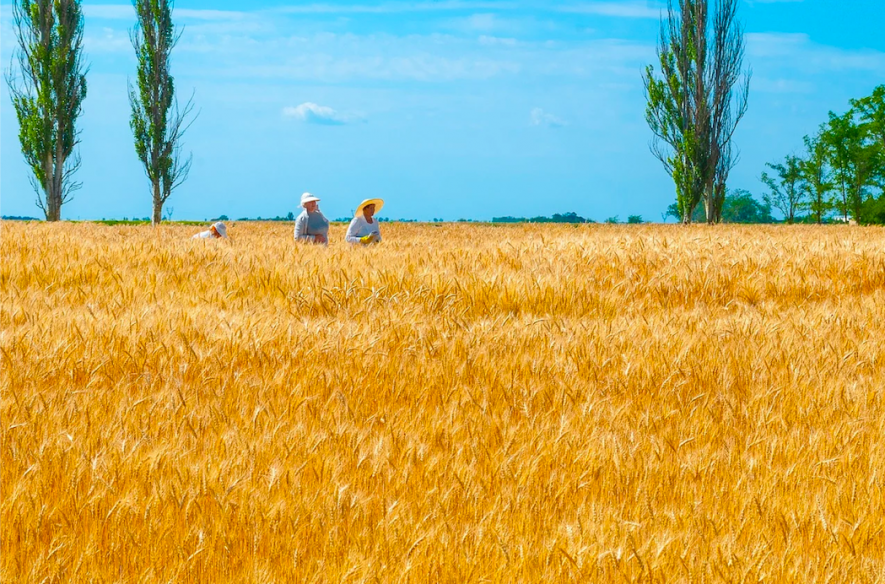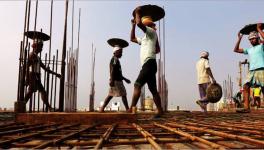Global Food Crisis: Domestic Self-Sufficiency in Staples is the Only Way Out

The world has been facing a food crisis of unseen magnitude for many decades. The Food and Agriculture Organization of the United Nations (FAO) warned in May that the “number of people facing acute food insecurity and requiring urgent life-saving food assistance and livelihood support continues to grow at an alarming rate”. This crisis has been in the making for some time, precipitated by the economic sanctions the United States and the European Union have imposed on Belarus and Russia.
In a meeting on June 3 with Russian President Vladimir Putin, Macky Sall, the President of Senegal and Chairperson of the African Union, several of whose member countries face an enormous humanitarian crisis, said, “Anti-Russia sanctions have made this situation worse. Now we do not have access to grain from Russia, primarily wheat. And most importantly, we do not have access to fertiliser. The situation was bad, and now it has become worse, creating a threat to food security in Africa.”
International organisations such as the FAO and the World Food Programme (WFP) have long argued that conflicts and wars are the primary causes of rising food insecurity in recent years. They have also held the Ukraine-Russia war primarily responsible for the recent rise in food prices and food insecurity. The Global Network Against Food Crises, created by the European Union, FAO and WFP, estimates that four crore additional people in the 53 most food-insecure countries urgently need food assistance because of the recent spikes in food prices and shortages in availability.
Conflicts and climate change hurt food availability, but holding them as the primary causes of the rise in food insecurity undermines the deeper causes of the current crisis. Even before the Russia-Ukraine war broke out, the world had a massive and sharply rising incidence of hunger and food insecurity. FAO data for 2020 said about 237 crore people faced moderate to severe food insecurity worldwide. About 62 crore—the largest in any single country—were in India alone. It is expected that the numbers on food insecurity and hunger will be even higher when updated data are published later this year.
Over the last few decades, globalisation, particularly the international trade regime created under it, has created a sharp imbalance in the levels of support provided to farmers in developed and less-developed countries. As a result, the Global South has become a source of food commodities that cannot be produced in developed countries and is increasingly dependent on large-scale agriculture in developed countries for staple food commodities.
Over the last three decades, India has become increasingly dependent on imports of pulses and edible oils. Increased price volatility due to trade liberalisation on the one hand and lack of public procurement on the other have disincentivised farmers from cultivating pulses and oilseed crops. India is the biggest importer of edible oils and pulses. (In 2017-19, 68 per cent of edible oil and 17 per cent of pulses consumed in India were imported.) In addition, with the withdrawal of public funding in agricultural research in the Global South, big international agri-businesses have acquired monopoly control over supplies of modern agricultural inputs, including fertilisers and seeds. India’s reliance on imports of manufactured fertilisers has steadily increased. In 2020, India met about 30 per cent of urea supply and 61 per cent of Di-Ammonium Phosphate (DAP) supply through imports.
Globalisation has not only resulted in increased volatility in food prices, but it has also created the conditions in which millions are vulnerable to short term disruptions and volatility. Low farm incomes, widespread unemployment among rural and urban working classes and shrinking access to social security systems have all contributed to food insecurity and vulnerability.
The current global food crisis must be seen in this background.
Even if we look at the immediate factors that have contributed to the food crisis, economic sanctions by the European Union and NATO seem to be the primary culprits. The use of economic sanctions to specifically target food supplies and agricultural inputs preceded the Russia-Ukraine war. Since 2020, the European Union and the United States have progressively imposed restrictive measures against Belarus, the largest potash producer. In fact, specific sanctions were imposed against Belarus Potash Company and Belaruskali, the two biggest Belarusian potash exporters. The United States sanctions on Iran, a major DAP supplier, also contributed to contract fertiliser availability.
NATO’s sanctions against Russia, banning Russia from the SWIFT payment system that almost all banks use, and restrictions on basic maritime services such as marine insurance and port facilities by Russian shipping vessels have all contributed to curtailing the global supplies of grain and fertilisers. Though the purchase of grain, fertiliser and fuel is not covered under sanctions, the United States has arm-twisted much of the Global South, including India, to stop buying from Russia, even though the European Union continues to use Russian gas and oil.
Supported by NATO, Ukraine has not only shut its ports but mined the sea around Odessa to prevent the possibility of a Russian attack on the port. Although Russia, along with Turkey, has proposed that a corridor be created in the Black Sea to allow food shipments, Ukraine has not accepted the proposal claiming Russia could use even this corridor for an attack.
Fears of scarcity have led several countries to introduce export restrictions. According to the IFPRI Export Restrictions Tracker, many countries have imposed restrictions on the export of different food commodities in recent months. These include Indonesia, Malaysia, India, Pakistan, Afghanistan, Iran, Kuwait, Lebanon, Turkey, Egypt, Algeria, Tunisia, Morocco, Ghana, Burkina Faso, Kyrgyzstan, Kazakhstan, Azerbaijan, Moldova, Kosovo, Serbia, Hungary, Argentina and Russia and Ukraine. Many of these countries are major suppliers of essential food commodities resulting in a considerable gap between the global supply and demand of cereals, edible oils, pulses and sugar.
Along with this, supply shortages and high inflation of fuel and fertilisers have adversely affected the global food supply. International prices of DAP in March 2022 were 81 per cent higher than prices in March last year. In March 2022, global potash prices were about three times, and urea prices were about double the prices in March last year. Fertiliser exports have been restricted by China, South Korea, Kyrgyzstan, Russia and Ukraine. The United States has pressured a number of countries to stop buying grain, fuel and fertiliser from Russia. With national food self-sufficiency in the global south compromised because of the neo-liberal project, export restrictions on food and agricultural inputs by major suppliers are expected to worsen food insecurity significantly.
High food prices can be highly deceptive. It is commonly believed that farmers benefit from high food prices during a crisis; that they are happy with the high prices they are receiving for their crops. In India, public procurement during this year’s rabi season was low because wheat and mustard are fetching good prices in the open market. However, this is an illusion, and we must not make the mistake of thinking that high food prices during such a crisis are good for farmers. Over the last few years, Indian farmers have been demanding higher, more remunerative, and assured prices for their produce through statutory minimum support prices and greater public support. However, farmers will be adversely affected when agricultural prices rise as part of generalised food inflation during a global crisis. Why? First, because the prices for farm produce are lower than consumer prices. Secondly, given their neo-liberal orientation, governments have not prioritised regulation of input prices to protect farmers against price inflation. In such a situation, an increase in the cost of cultivation eats into the benefit of higher food prices. Finally, a vast majority of farmers in the Global South are small producers who are net buyers of food. Inflation hurts them even more, as they sell their products cheap and are forced to buy food and other necessities when they are dear.
The key lesson countries must learn from the current food crisis is that domestic self-sufficiency in staple food production is important for large countries. Achieving this requires public investment in agriculture and food systems. Governments must prioritise agricultural research and assure supplies of farm inputs. Incentivising farmers to produce important food crops through price regulation systems, public procurement and input subsidies, and robust social protection, including subsidised food distribution, are critical for food security. Policies that have undermined these priorities must get reversed.
The author is a professor of economics at Jawaharlal Nehru University, Delhi. The views are personal
Get the latest reports & analysis with people's perspective on Protests, movements & deep analytical videos, discussions of the current affairs in your Telegram app. Subscribe to NewsClick's Telegram channel & get Real-Time updates on stories, as they get published on our website.
























